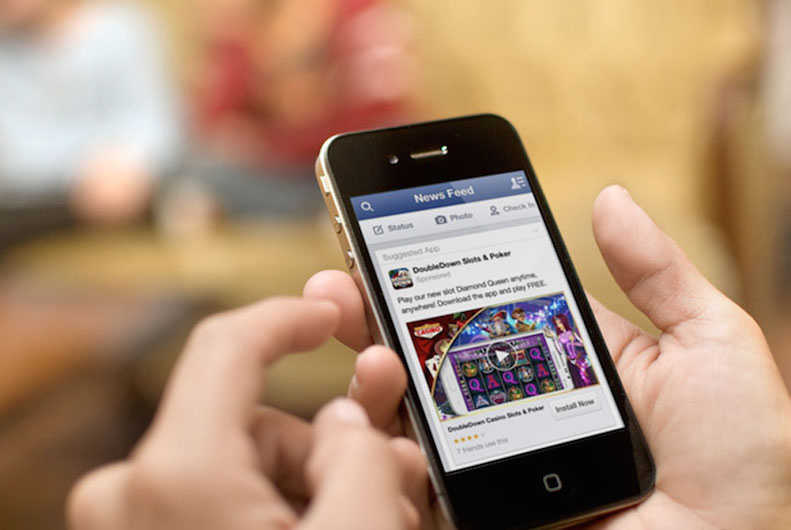 The most important thing to remember about video advertising in the mobile era is this: smartphones are not tiny televisions. Just as TV wasn’t visual radio and radio wasn’t an audible newspaper, mobile must be recognized for what it is — a new medium that demands new content grounded in experiences that are native to the platform, such as speed, choice and relevance.
The most important thing to remember about video advertising in the mobile era is this: smartphones are not tiny televisions. Just as TV wasn’t visual radio and radio wasn’t an audible newspaper, mobile must be recognized for what it is — a new medium that demands new content grounded in experiences that are native to the platform, such as speed, choice and relevance.
The golden age of TV advertising flourished when creative masters embraced the possibilities of a new medium where, for the first time ever, every household had a screen.
Today, television is still a powerful medium where great creative work takes place. But now, it’s in direct competition with mobile – a medium defined by the fact that beyond every household, every person has a screen, on their person, at all times.
On smartphones, people are in full control of what they see – where and when they want to see it. And they’re exercising that agency at all times. When the TV no longer holds their attention, they’re picking up their phone. Phone in hand, they’re scrolling through feeds and moving between other apps and sites.
Mobile has trained people to focus, choose what’s relevant, consume what matters and move on.
People scroll through mobile News Feed 41 percent faster than desktop News Feed. And when videos start to auto-play on Facebook, which happens about 70 percent of the time due to a user’s settings, network and behavior, two people watch them for 16.7 seconds on average. A similar story holds true for video adverts that are watched in News Feed for 5.7 seconds on average.
Because people can watch virtually anything at any time, they’re only going to watch adverts that grab their attention, reward their time and are immediately relevant. As a consequence, even though aggregate advert view time is up, individual session times are down. People aren’t watching adverts for as long as they used to, on any medium.
Despite endless effort and deep expertise, no mobile platform has proven it can sustain run-of-the-mill. 30-second spots at the scale that TV once provided. TV spots that were designed for a captive audience struggle to hold attention on mobile and don’t get watched all the way through. YouTube just killed off the 30-second, non-skippable advert.
The consumer has spoken. But are we listening? Mobile has shown us that we no longer have the right to disrupt. Instead, we have the right to earn people’s attention. If marketers with fixed budgets are going to meaningfully connect with audiences and drive growth, they have to keep pace in this new, complex landscape and optimize for mobile content.
New Playbooks For The Mobile Era
All of this raises the question: what’s the best way forward for mobile video adverts? How can advertisers wrangle the complexity of this new, fragmented space and evolve as quickly as these platforms evolve?
At Facebook, we’ve learned a lot about what works by talking to some of our most successful advertisers, from Nestlé to Airbnb to Ubisoft. These are their best practices:
1. Build brand new, short-form, mobile creative. Ensure the video rewards people’s attention and tells its story, even if only the first few seconds are watched. Use mobile native tools, techniques and styles to echo the organic content people like to see.
2. Re-organize to test and measure adverts on a weekly cycle, not every six months. Build organizations that can deliver quality creative inexpensively and at short notice. Align creative, measurement and media teams to connect and work together as a single team. We recognize this can be a formidable challenge, but mobile is evolving too quickly for a traditional, fragmented approach to work well.
3. Don’t try to equate disparate platforms. Each new mobile format (e.g. News Feed, Stories, advert breaks, TrueView) has different consumer expectations and behaviors. Be careful of false equivalences or standards between them that can blind your organization to their unique nature. For example, a guaranteed ten-second advert break requires different creative than a video in a feed that may be seen for six seconds by the average person, but for 30 seconds by 10 percent of the audience. Facebook isn’t YouTube, YouTube isn’t Search, Search isn’t Snapchat.
4. Measure results, not seconds. It’s true that this new world is complex, but it’s worth the investment to map it. To do this digital reconnaissance, it’s crucial to measure business value and results on a per-creative, per-platform, per-audience basis. An advertiser’s ability to measure the right things properly will be the biggest predictor of their mobile advertising success.
Moreover, it’s our responsibility to build the tools and systems that will help marketers learn more quickly. To that end, these are our tenets:
1. Transparency is paramount. To create fantastic new stories for the complex landscape of mobile formats, marketers must understand every nuance of consumer behavior, with detailed insights provided by the publisher, including Facebook – not just top-line metrics.
2. Measurement tools must evolve. Mobile platforms such as Facebook must help advertisers compare and very rapidly evaluate the impact of each new mobile format – for brands, direct response and hybrids of both. We’re investing in more granular reporting metrics within our native tools, and later this year, we’ll launch more visual measurement solutions to help advertisers better understand content consumption across our platforms.
3. Build new ways to tell stories. Even though attention is now sporadic and short, consumers are more focused on their phones than ever before. We’re always working to find ways to tell meaningful, emotional stories in short form.
The best marketers, whether they’re digital native, direct response or brand, are working with the diverse consumer behaviors in the new mobile medium, not against them. They recognize that when it comes to mobile, the people and the platforms are so new, fluid and non-uniform that success is being driven by rapid adaptation and novel methods. Like TV, and radio before it, mobile creative has to match the medium – it has to be immediately relevant.
With vision, a little flexibility and continued experimentation from the best creative minds in the business, we’ll find ourselves at the threshold of a new golden age of advertising.




